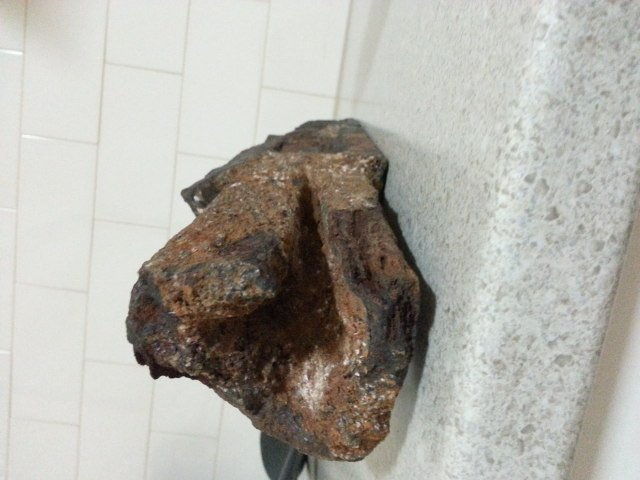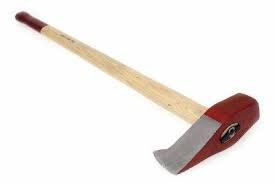-
Please join our new sister site dedicated to discussion of gold, silver, platinum, copper and palladium bar, coin, jewelry collecting/investing/storing/selling/buying. It would be greatly appreciated if you joined and help add a few new topics for new people to engage in.
Bullion.Forum

You are using an out of date browser. It may not display this or other websites correctly.
You should upgrade or use an alternative browser.
You should upgrade or use an alternative browser.
Anyone know what this is?
- Thread starter SC75
- Start date

Help Support Prospecting Australia:
This site may earn a commission from merchant affiliate
links, including eBay, Amazon, and others.
Whale harpoon
Possibly the pointy end of an old push plough
ray
ray
- Joined
- Nov 6, 2017
- Messages
- 618
- Reaction score
- 332
i am sure its one of those ploughshare things actually. looks almost exactly the same as in you photo wally. good work everyone. give yourselves a pat on the back. even you silver. very helpful to help us eliminate certain things. hahah
now i just have to work out what to do with it. great.... more reading.
heres the photos of the attachment end as promised yesterday. thank you for helping everyone.



now i just have to work out what to do with it. great.... more reading.
heres the photos of the attachment end as promised yesterday. thank you for helping everyone.



StoneTheCrows
Neil Mulvaney
wally you are a sleuth
I reckon you should have been a detective
I reckon you should have been a detective
hippyhunter said:i am sure its one of those ploughshare things actually. looks almost exactly the same as in you photo wally. good work everyone. give yourselves a pat on the back. even you silver. very helpful to help us eliminate certain things. hahah
now i just have to work out what to do with it. great.... more reading.
heres the photos of the attachment end as promised yesterday. thank you for helping everyone.
https://www.prospectingaustralia.com/forum/img/member-images/11389/1510107219_20171108_081805.jpg
https://www.prospectingaustralia.com/forum/img/member-images/11389/1510107219_20171108_081832.jpg
https://www.prospectingaustralia.com/forum/img/member-images/11389/1510107240_20171108_082015.jpg
It does not look like any of the things mentioned here to me, and looks natural. Firstly, the original big lump looks like conglomerate (perhaps iron-cemented gravel) and warrants breaking up and panning off. After "cleaning, what remains looks like a big bedrock boondie that was in the conglomerate or that it rested on in the stream bed. Are you sure that it still reads, or was it the conglomerate that you broke off that reads? The shape resembles a very tight fold in sandstone, with slate in its core showing an axial planar cleavage.
http://1.bp.blogspot.com/-LYZTCyjPwgI/TZ4QOiuGmbI/AAAAAAAAAY8/vJ91HjDkyL0/s1600/llumeres5.jpg
http://www.rci.rutgers.edu/~schlisch/structureslides/apcleavage.gif
axial planar cleavage is planar and occurs parallel to the axial surface of the fold (parallel to a plane that folds the two fold limbs in two). Where slate and sandstone is folded together (imagine folding a magazine and its thick cover so that it is a tight V shape), the cleavage is often only visible in the slate (the pages), not the sandstone (the thicker cover). It is usually easy to split the rock along the parallel planes of cleavage in the slate part.
of the core of the fold.
http://www.rci.rutgers.edu/~schlisch/structureslides/apcleavage.gif
axial planar cleavage is planar and occurs parallel to the axial surface of the fold (parallel to a plane that folds the two fold limbs in two). Where slate and sandstone is folded together (imagine folding a magazine and its thick cover so that it is a tight V shape), the cleavage is often only visible in the slate (the pages), not the sandstone (the thicker cover). It is usually easy to split the rock along the parallel planes of cleavage in the slate part.
of the core of the fold.
Wally69 said:
Thanks Wally :Y: super
SC75 said:Found a coin/token out Barkstead but not sure what type of coin.
https://www.prospectingaustralia.co...6459_72d289df-cf31-44fe-8774-34b6cce4cbe2.jpg
https://www.prospectingaustralia.co...6459_d0a05541-8b6c-4393-bcf4-2a31747b6785.jpg
I can see 1857 but not sure what type of coin.
That is pretty early - 1857 and we already needed wine merchants!
Similar threads
- Replies
- 0
- Views
- 348
- Replies
- 19
- Views
- 2K
- Replies
- 0
- Views
- 484
- Replies
- 3
- Views
- 595







